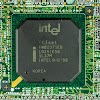
1. Analog Signals An analog signal is a signal whose amplitude is a function of time and changes gradually as time changes. Analog signals can be classified as non periodic and periodic signals.
2. Non periodic Signal In a non periodic signal, there is no repeated pattern in the signal
3. Periodic Signal A signal that repeats a pattern within a measurable time period is called a periodic signal, and completion of a full pattern is called a cycle.
4. Digital Signals Modern computers communicate by using digital signals. Digital signals are represented by two voltages: one voltage represents the number 0 in binary, and the other voltage represents the number 1 in binary. where 0 volts represents 0 in binary and þ5 volts represents 0 or 1 is called a bit and 8 bits is called a byte.
Unsigned, Signed Magnitude, and Signed Two’s Complement Binary Number
A binary number can be
represented in form unsigned number or signed number or signed two’s complement, þ sign represented
by 0 and – sign represented by 1.
Unsigned Number In an unsigned
number, all bits of a number are used to represent the number, but in a signed
number, the most significant bit of the number represents the sign. A 1 in the
most significant position of number represents a negative sign, and 0 in the
most significant position of number represents a positive sign. The 1101
unsigned value is 13.
Signed Magnitude Number In a
signed number, the most significant bit represents the sign, where 1101 ¼ _5 or
0101 ¼ þ5 In unsigned number, 1101 ¼ 13.
Signed Two’s Complement A signed two’s complement
applies to a negative number. If the sign of the number is one, then the number
is represented by signed two’s complement.
Parity
Bit

A parity bit is used for error
detection of information, since a bit or bits may be changed during the
transmission of information from source to destination, a parity bit is an
extra bit appended to the information. It represents whether the number of ones
or zeroes is either even or odd in the original transmission and can alert the destination
to a loss of information.
Even
Parity:
The extra bit (0 or 1) is chosen such that the number of ones becomes even.
Transmission
Modes
When data is transferred from one
computer to another by digital signals, the receiving computer has to
distinguish the size of each signal to determine when a signal ends and when
the next one begins. Synchronization methods between source and destination
devices are generally grouped into two categories: asynchronous and synchronous.
Synchronous
Transmission
Some applications require transferring large blocks of data, such as a file from disk or transferring information from a computer to a printer. Synchronous transmission is an efficient method of transferring large blocks of data by using time intervals for synchronization.













0 Comments